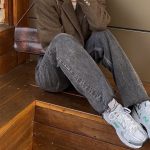Receiving a new member of the family requires a prior preparation, especially if you are new to parenting. Your baby will most probably start crawling at the age of eight months, but there are also safety hazards for newborn babies. It is, therefore, necessary to ensure that your house is safely set-up even before the baby is born. Starting early is a necessity because the preparations that require structural changes and furniture purchase may take time. The changes you make should ensure that whatever the baby tries to touch, pull or play with won’t harm him or her. Below are essential home areas to consider when baby proofing your home.
The Nursery
A nursery is the baby room. You should make sure that the room is spacious, well ventilated and with the necessary nursery furniture from trusted dealers like Mokee. You should purchase well-designed baby cot bed and Moses baskets to prevent the baby from falling. Also, ensure that the sheets and mattress fit tightly to avoid suffocation. Another essential feature is having a CCTV installation in the nursery to help you monitor the baby remotely.
The Kitchen
The kitchen is a risky area for toddlers, given that there are a lot of hazardous items such as sharp knives and cooking appliances. People are also more distracted when in the kitchen, meaning you may forget to keep check of your child while in the kitchen. Some of the activities to make childproof in the kitchen are;
Rearrange Your Storage: Ensure that you have moved all detergents and other cleaning chemicals from low cabinets to the top ones. The bottom cabinets should hold less risky things like plastic containers and paper products. The same should also apply for sharp objects and paper bags due to the risk of cuts and suffocation.
Appliances: Always ensure that you unplug small appliances when they are not in use, but ensure that the cords are out of reach. Curious toddlers may pull the colds and get injured by the falling objects.
Drawers and cupboards: you can install child safety locks on the easy-to-reach cabinets and the cupboards holding hazardous things.
Living Room
The living room has less hazardous than the kitchen, but the furniture in the room are a safety risk for toddlers. All furniture with a sharp edge are a hazard due to the risk of headbangs, as toddlers regularly fall as they try to make their first steps. You can eliminate the furniture with sharp edges or install edge protector strips and cushioned corner guards. Also, move furniture away from windows to protect the baby from climbing on windows and falling out. The TV should be attached to the entertainment so that the baby cannot pull it down.
Having a non-slip rug is a plus to the safety of your child if the floor is made of hardwood or tiles. The carpets will reduce falling accidents, plus it will act as a cushion whenever the baby falls or trips when playing.
The Bathroom
Like the kitchen, the bathroom is another hazardous room if you have a baby. The chemicals in the bathroom are poisonous if swallowed, plus the baby can easily drown in the bathtub. There are also sharp objects such as Razors, tweezers and scissors and not forgetting the electric appliances like the blow-drier and the curling iron. Installing a childproof cover over the bathroom’s door ensures that the baby does not find their way into the bathroom unsupervised. You should always keep the toilet lid down and install a lock to prevent them from opening, as they may fall head down while trying to peep and see the inside.




